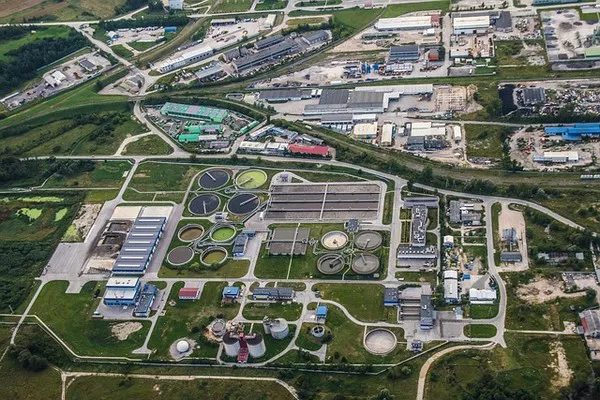Wastewater treatment plants play a crucial role in protecting the environment and public health by removing contaminants from sewage and industrial wastewater. However, the treatment process generates a byproduct known as sludge, which contains a concentrated mix of solids and contaminants. Proper treatment and disposal of this sludge are essential to prevent environmental pollution and health risks. This article explores the various methods and technologies used to treat sludge at wastewater treatment plants, highlighting the importance of sustainable and responsible sludge management.
Understanding Wastewater Treatment and Sludge Generation
Before delving into sludge treatment methods, it’s important to understand how wastewater treatment plants operate and why sludge is generated. The primary objective of wastewater treatment is to remove impurities and pollutants from raw sewage or industrial wastewater, making it safe for release into the environment or reuse. This process involves several stages, including primary, secondary, and tertiary treatment, each designed to remove specific types of contaminants.
In the primary treatment stage, physical processes such as screening and sedimentation are used to remove larger solid particles and debris from the wastewater. Secondary treatment utilizes biological processes to further break down organic matter and remove dissolved and suspended solids. Finally, tertiary treatment, if required, involves advanced filtration and chemical treatment to remove remaining contaminants.
Throughout these treatment stages, solids are separated from the liquid wastewater. These solids, along with bacteria and other microorganisms used in the treatment process, form the sludge. The composition of sludge can vary widely depending on the wastewater source and treatment methods used but typically contains organic matter, pathogens, heavy metals, and other pollutants.
Sludge Treatment Methods
To manage sludge effectively, wastewater treatment plants employ a range of treatment methods and technologies. These methods can broadly be categorized into two groups: thickening and dewatering, followed by stabilization and disposal. Here’s an overview of each step:
Thickening and Dewatering:
Gravity Thickening: This method involves allowing sludge to settle under gravity, causing the solids to settle at the bottom and the liquid to rise to the top. The concentrated sludge is then removed for further processing.
Mechanical Thickening: Mechanical equipment, such as belt filter presses, centrifuges, and screw presses, is used to increase the solid content of sludge by removing excess water.
Stabilization:
Anaerobic Digestion: In this process, sludge is placed in an oxygen-free environment, where anaerobic bacteria break down organic matter into biogas (methane and carbon dioxide) and stabilized solids. The biogas can be used as an energy source, and the resulting sludge is less odorous and easier to manage.
Aerobic Digestion: Unlike anaerobic digestion, aerobic digestion uses oxygen to break down organic matter. It is faster but requires more energy and produces less biogas.
Composting: Some wastewater treatment plants employ composting techniques to further stabilize sludge. Composting involves mixing sludge with organic materials and allowing it to decompose into a nutrient-rich soil conditioner.
Alkaline Stabilization: This method involves adding lime or other alkaline materials to sludge to raise its pH, reducing the potential for pathogens and odors.
Disposal and Reuse:
Land Application: Treated sludge can be applied to agricultural land as a soil conditioner and fertilizer, provided it meets regulatory guidelines.
Incineration: Incineration is used to thermally treat sludge, reducing its volume and destroying organic matter. It is an effective method for minimizing sludge volume and producing energy from the combustion process.
Landfilling: In cases where other disposal methods are not feasible, sludge may be disposed of in secure landfills that meet stringent environmental regulations.
Sustainable Sludge Management
As wastewater treatment plants continue to evolve, there is a growing emphasis on sustainable sludge management practices. Here are some key considerations in achieving sustainability in sludge treatment:
Resource Recovery: Many treatment plants are exploring opportunities to recover valuable resources from sludge, such as biogas for energy generation and phosphorus for fertilizer production.
Regulatory Compliance: Adherence to local, state, and federal regulations is essential to ensure that sludge management is environmentally responsible and safe for public health.
Environmental Impact: Minimizing the environmental impact of sludge management, including reducing greenhouse gas emissions and preventing contamination of water and soil, is a priority.
Public Engagement: Engaging with the community and stakeholders is crucial to gain support and address concerns related to sludge treatment and disposal.
Conclusion
Sludge treatment at wastewater treatment plants is a vital component of the overall wastewater management process. Properly managing sludge is essential to protect the environment, public health, and valuable resources. Through thickening, stabilization, and responsible disposal methods, treatment plants can effectively transform sludge into safe and beneficial products. As sustainability becomes increasingly important, wastewater treatment facilities will continue to innovate and implement environmentally friendly practices to minimize the impact of sludge on our communities and ecosystems.

